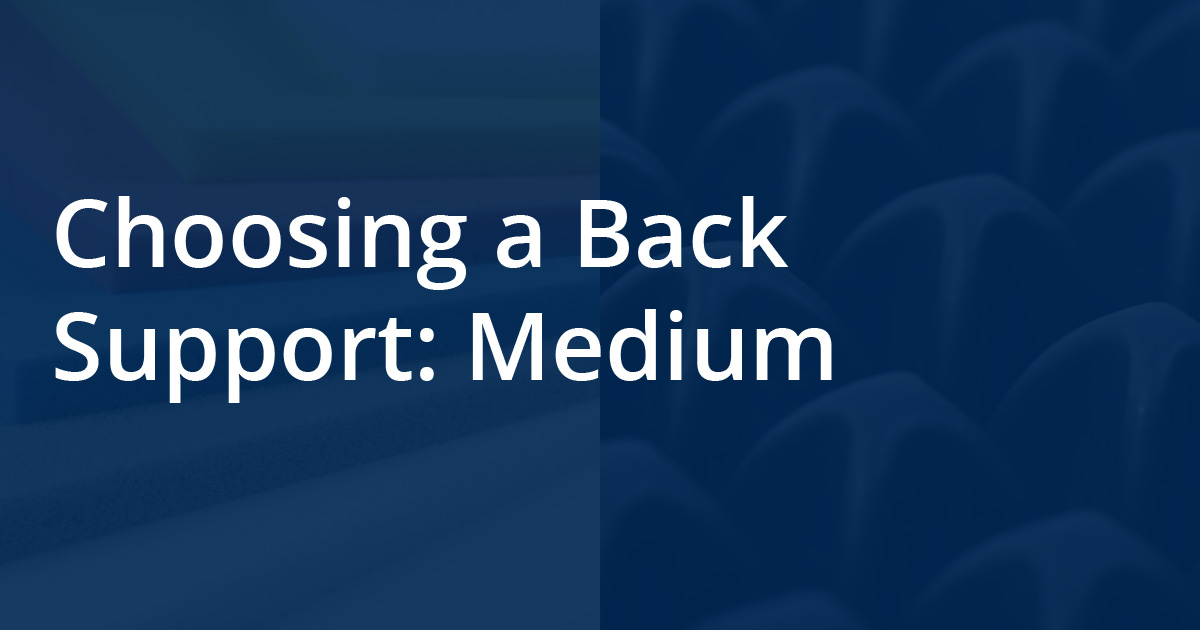Looking for more information on seating and positioning? Check out our digital, rehab-focused Wheelchair Seating & Positioning Guide here.
There are three areas to consider when choosing a back support: shape of the shell, medium, and adjustability. Today we are looking at different back support mediums and the benefits and considerations of each.
Understand the available mediums, the materials used in the design, when choosing a back support. No matter the contours, the quality of the mediums will affect the application of the back support. Each has benefits and considerations, and we will look at each one.
- Foam
- Air
- Combination
Foam
| Benefits | Considerations |
|
Most common |
Can be hot |
|
A high quality visco elastic foam allows immersion and envelopment of an individual's shape |
Consider quality and type of foam used as it affects immersion and envelopment and pressure redistribution |
Air
| Benefits | Considerations |
|
Air cells that allow the transfer of air mimic the pressure redistribution properties of water |
May require maintenance |
|
Individual air cells shift according to the shape of the user |
|
|
Allows for optimal envelopment and pressure redistribution |
|
|
Adjustable to configure the back support for optimal pressure redistribution. |
Combination
| Benefits | Considerations |
|
Offer the stability of foam with the pressure redistribution properties of air or gel |
May require maintenance |
Check back next time as we turn our focus to what adjustability means in terms of choosing a back support.

 Stacey Mullis, OTR/ATP
Stacey Mullis, OTR/ATP
Director of Clinical Marketing
Stacey serves as Director of Clinical Marketing for Permobil. A practicing OTR for over 20 years, she has experience in school-based pediatrics, inpatient rehabilitation, long term care, and home health. With her interest in wheelchair seating and positioning, Stacey engaged the challenges of providing appropriate seating in various clinical settings. She now uses this experience to develop programs and resources to educate clinicians on the principles of seating and wheeled mobility. She is passionate about equipping clinicians and through her previous role as Director of Clinical Education with Comfort Company and now with Permobil she has taught nationally and internationally to increase therapist capacity in this specialty area. Mullis graduated from Western University in London, Ontario, Canada with a BA Linguistics and BSc Occupational Therapy. She is a member of the NCOTA, CTF Executive Board, NRRTs, RESNA, and AOTA.

